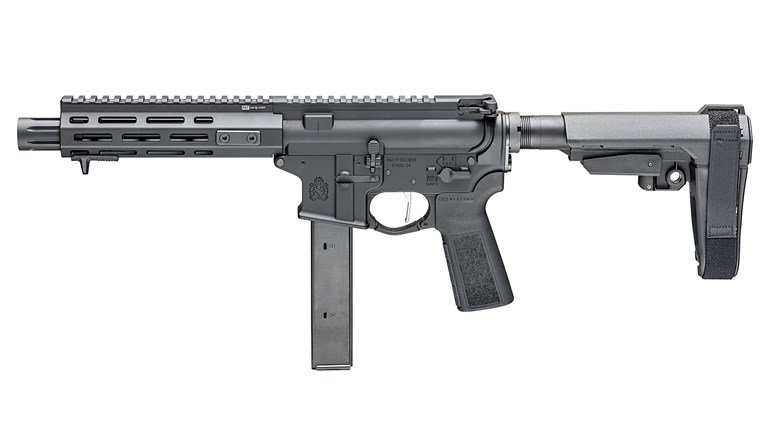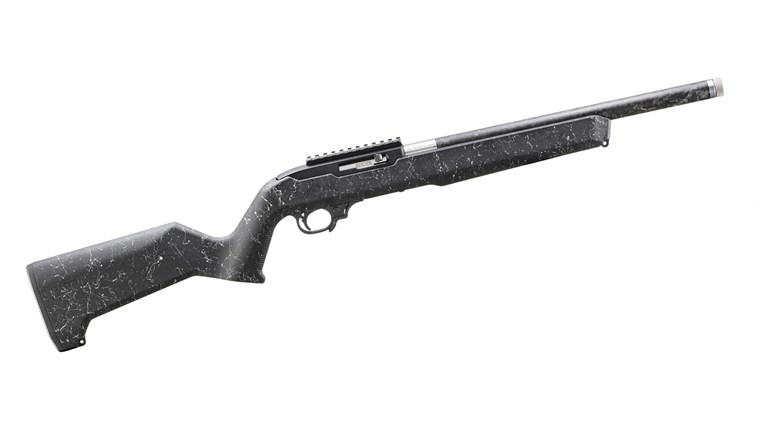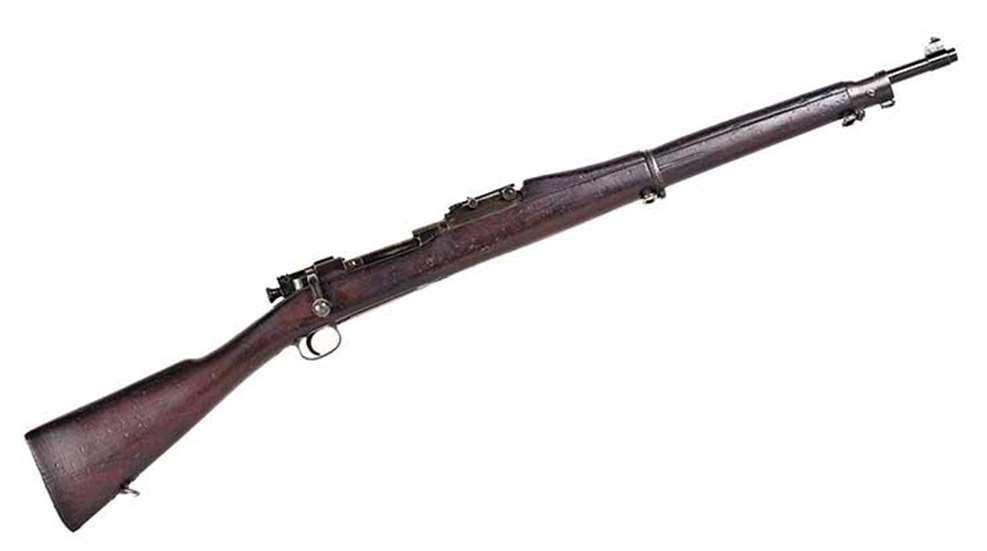
Unlike previous individual shouldered weapons, such as the Model 1892 to Model 1899 Krag-Jorgensen and the Springfield Trapdoor, which were issued in both rifle and carbine versions, the M1903 Springfield existed only as a rifle. Moreover, it was a bolt-action rifle that fired a new high-pressure, smokeless-powder cartridge with a spitzer bullet.
The rifle’s development was given additional emphasis when Theodore Roosevelt—who had battlefield experience in the Spanish-American War with the slow-loading Krag—became president after William McKinley’s assassination. Specifically developed as an improvement over the Krag, the M1903 Springfield was approved on June 20, 1903, and manufacturing was undertaken by both Springfield Armory and Rock Island Arsenal.
Weighing 8 1/2 pounds, the M1903 Springfield had a 24-inch barrel and featured a full-length wooden stock with an elongated finger-groove forearm and a “humped” handguard to protect the rear sight. Its internal, five-round magazine was loaded via a stripper clip, with cartridges pressed into the magazine through the opened receiver.
The rifle also incorporated a unique “rod bayonet” that slid out from the stock underneath the barrel, providing a comparatively flimsy means of close-quarters combat. Soldiers were thankful when the much sturdier Model 1905 bayonet, with its 16-inch blade, was adopted—largely due to the insistence of Roosevelt who called the rod bayonet, “... about as poor an invention as I ever saw.”
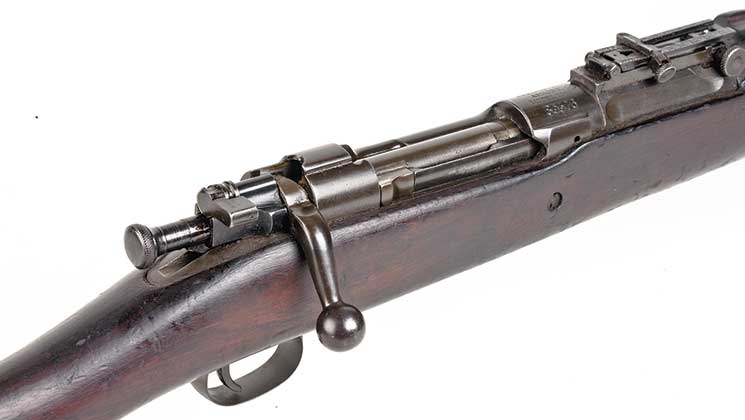
The ’03 Springfield incorporated many features—including safety and extractor modifications, and the stripper clip—of the 1893 Mauser. Ultimately, royalties were paid by the U.S. government to the Mauser factory, which is somewhat ironic considering the hostilities with the German Empire during World War I. Among the M1903’s attributes were a non-rotary extractor that prevented double feeding of cartridges, and—to allay governmental fears of wanton waste of ammo by trigger-happy troops—a magazine cutoff. In addition, the Springfield featured a bolt-cocking plunger, which permitted the rifle to be de-cocked without pulling the trigger.
Originally, the 1903 Springfield was chambered for a round that almost immediately became obsolete—the .30-’03—even though at the time it was heralded as an improvement over the .30-40 Krag. But, it used the same 200-grain, round-nosed bullet with a rainbow trajectory that sacrificed range and accuracy. The .30-’03 also built up excessive chamber pressures and, hence, recoil.
In 1906, the Springfield’s caliber was changed to what has become one of the most famous cartridges of all time, the .30-’06 Sprg. Designated “Cartridge, Ball, Caliber .30, Model of 1906,” it fired a 150-grain spitzer bullet (changed to a 172-grain boattail in 1926), which left the barrel at 2,800 fps.
This revolutionary new cartridge necessitated a slight redesign of the rifle, which included changing the rear sight to compensate for the flatter trajectory. The flip-up battle sights were optimistically calibrated for 2,850 yards. With the leaf down, the sight was set for 525 yards.
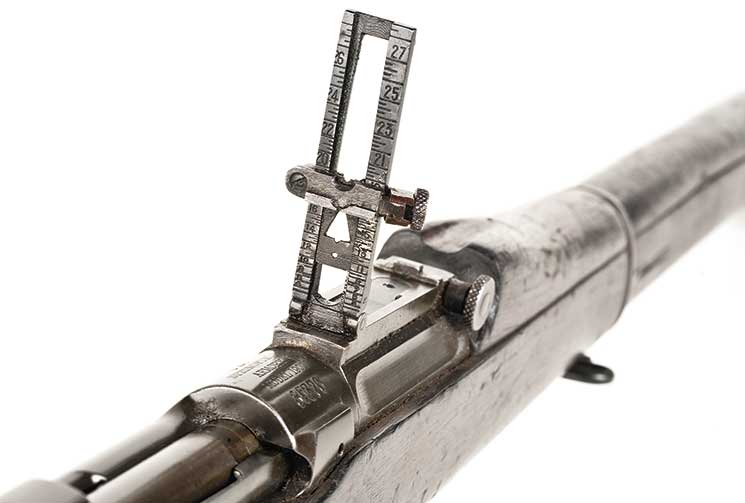
Rifles already chambered for the .30-’03 were altered by having their barrels turned back slightly and their chambers recut. Today, any early 1903 Springfield in original .30-’03 configuration is a rarity.
But one such gun that retained its .30-’03 chambering was serial number 6000, ordered by President Roosevelt soon after the M1903’s adoption. Roosevelt heartedly embraced the new bolt action and had number 6000 made into a customized sporter, the first such sporterized ’03 on record.
Roosevelt went on to use this rifle extensively on hunts throughout the west and on his famous African safari after his presidency. Following Roosevelt’s lead, a budding group of custom rifle makers, including Griffin & Howe, Fred Adolph and R.F. Sedgley, transformed these workhorse military rifles into classic sporting arms during the first part of the 20th century.
The development of the Springfield was serendipitous, for by the time the United States entered World War I in 1917, 843,239 rifles were already in service and production quickly ramped up. After the Armistice, manufacturing was halted at Rock Island, but the ’03 continued to be made at Springfield Armory until 1927. The rifle was again brought into battle during World War II, with Remington and Smith-Corona joining in its production.
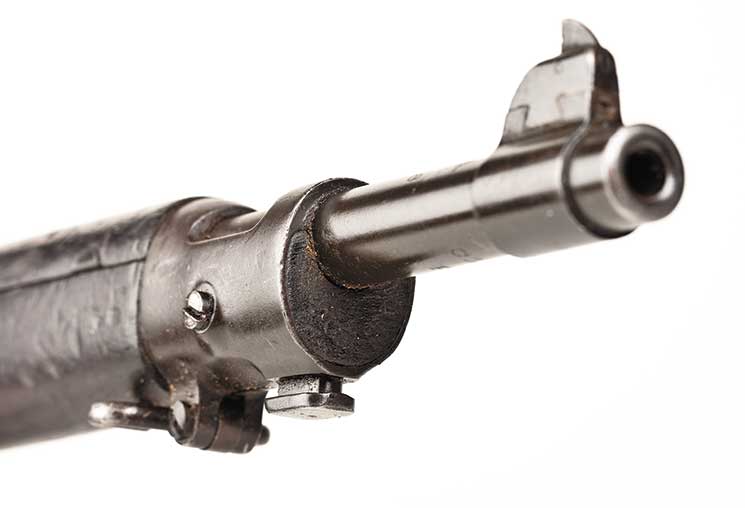
There were numerous variants of the ’03 Springfield, including the M1903A1 with a semi-pistol-grip stock, the WWII-era M1903A3 with stamped metal parts and the M1903A4 sniper rifle. It should be noted that early heat-treating problems resulted in a small number of rifles with serial numbers below 800,000 (Springfield Armory) and under 286,506 (Rock Island Arsenal) having malfunctions and the potential to cause damage to both gun and shooter. These guns are generally considered unsafe to fire without extensive examination of
the metallurgy.
Manufacturing of the ’03 Springfield was halted in 1945, when it was overshadowed by the M1 Garand. However, the rifle’s excellent accuracy and superb balance kept it in service until 1957.
In fact, it was this superb balance that first brought the M1903 to my attention years later—not on the firing line, but in ROTC, as a member of the Pershing Rifles Drill Team at Arizona State University. Using military-surplus nickeled rifles with white leather slings, we executed complex maneuvers, such as twirls, spins and the Queen Anne Salute with the Springfield. But today, as a shooter and collector, I have come to fully appreciate the M1903 Springfield as one of the finest military rifles of the 20th century.












